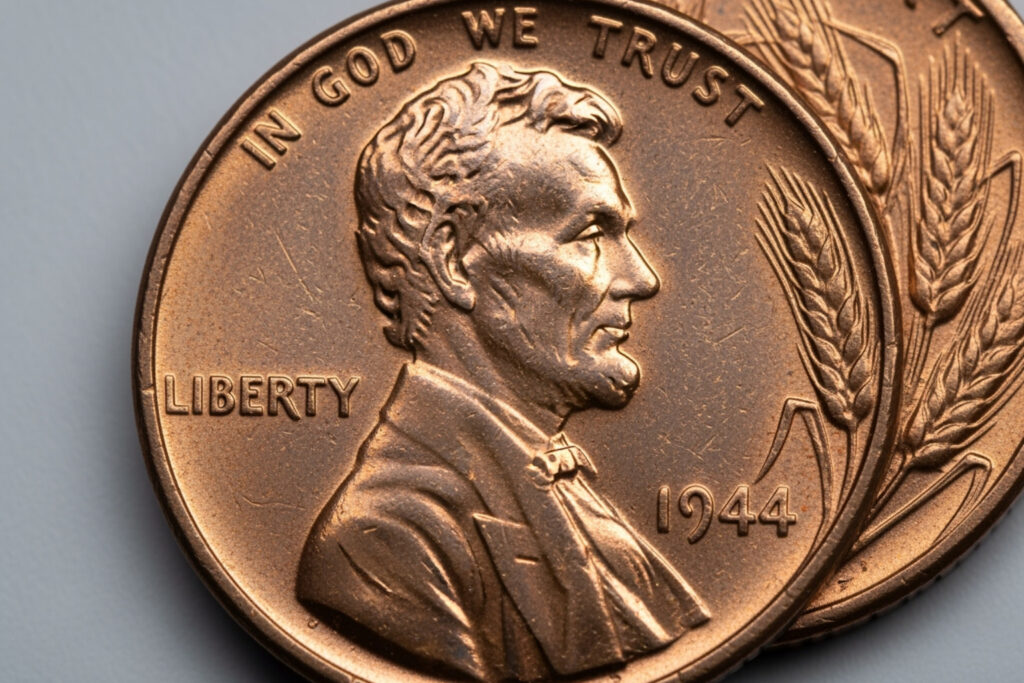Why the Most Valuable 1944 Wheat Penny Value Can Transform Your Pocket Change
The most valuable 1944 wheat penny value can reach extraordinary heights, with some rare varieties selling for hundreds of thousands of dollars. While most 1944 wheat pennies are worth just a few cents, specific error coins and pristine examples have created genuine treasure hunts in everyday pocket change.
The 5 Most Valuable 1944 Wheat Pennies:
- 1944-S Steel Wheat Penny – Up to $408,000 (only 2 known to exist)
- 1944 Philadelphia Steel Wheat Penny – $158,625 to $180,000 (20-40 estimated)
- 1944-D Steel Wheat Penny – $115,000+ (7-10 estimated)
- 1944-D/S Over-Mintmark Penny – $49,938 (doubled mintmark error)
- 1944 MS68 Red Copper Penny – $10,800 (perfect condition specimen)
The story of these pennies connects us to a pivotal moment in American history. During World War II, copper shortages led to the famous 1943 steel pennies. When production returned to copper in 1944 – often using recycled bullet shells – a few steel blanks accidentally made it into the new copper runs.
These “transitional errors” created some of the most sought-after coins in American numismatics. The beauty lies not just in their rarity, but in their connection to our shared history. Like finding an unexpected treasure in your grandmother’s jewelry box, finding a valuable 1944 penny offers a tangible link to the past.
For those who appreciate fine details and authentic materials – much like choosing quality skincare ingredients – coin collecting rewards careful observation and patience. The subtle differences between a common copper penny and a rare steel variety mirror the discerning eye needed for any pursuit of excellence.
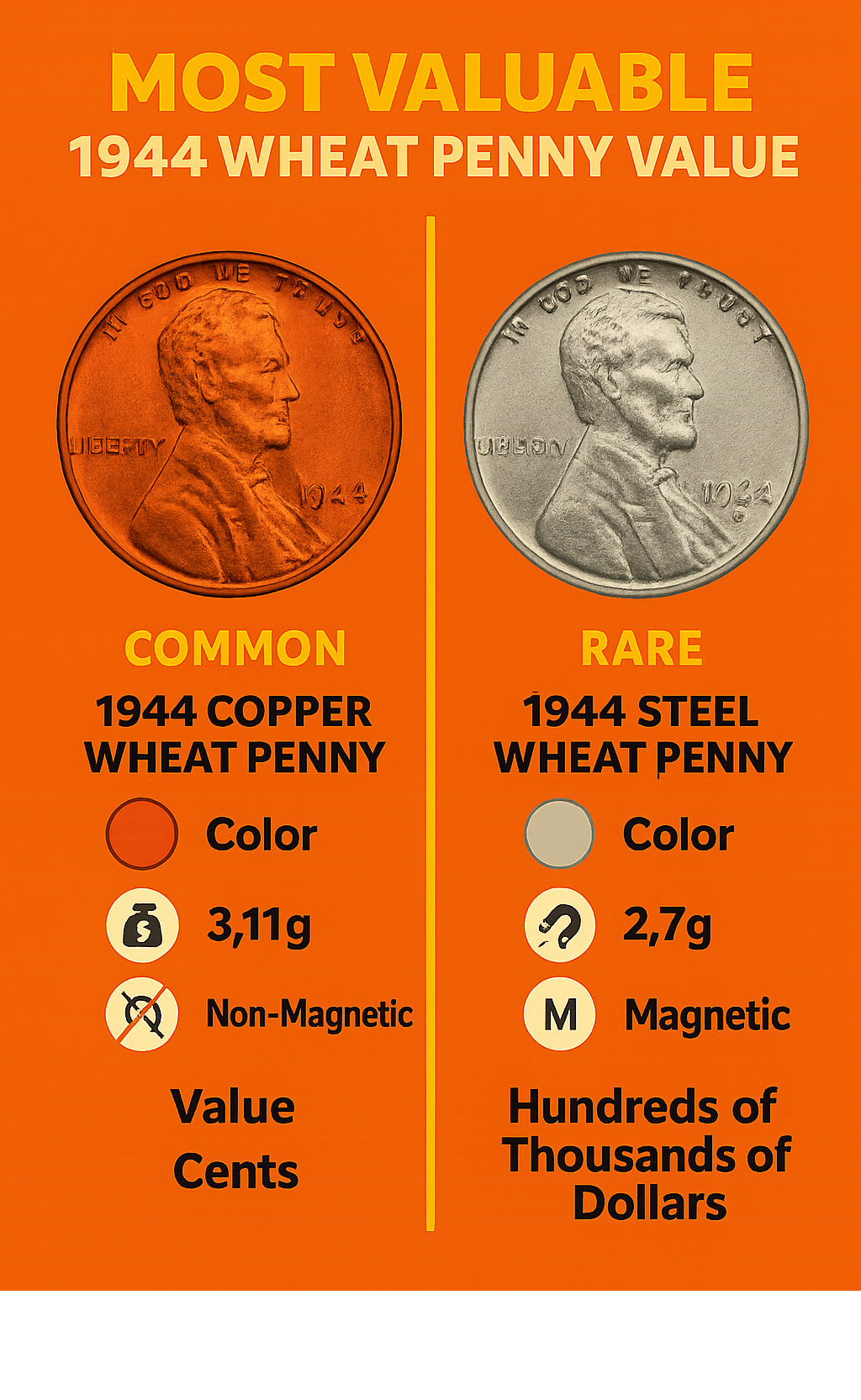
Most valuable 1944 wheat penny value word roundup:
The Top 5 Most Valuable 1944 Wheat Penny Varieties
There’s something magical about finding that an ordinary-looking penny might be worth more than your car. When we explore the most valuable 1944 wheat penny value, we’re diving into a world where minting mistakes became million-dollar treasures and perfect preservation transformed common coins into collector’s dreams.
These aren’t your typical pocket change finds. Each of these five varieties tells a fascinating story of wartime production, human error, and the beauty that collectors find in the unexpected. Let’s explore the specific coins that have collectors checking their change with magnifying glasses.
1. The 1944-S Steel Wheat Penny
Imagine holding one of only two coins known to exist in the entire world. That’s the extraordinary reality of the 1944-S Steel Wheat Penny, minted at the San Francisco Mint through what can only be described as a beautiful accident.
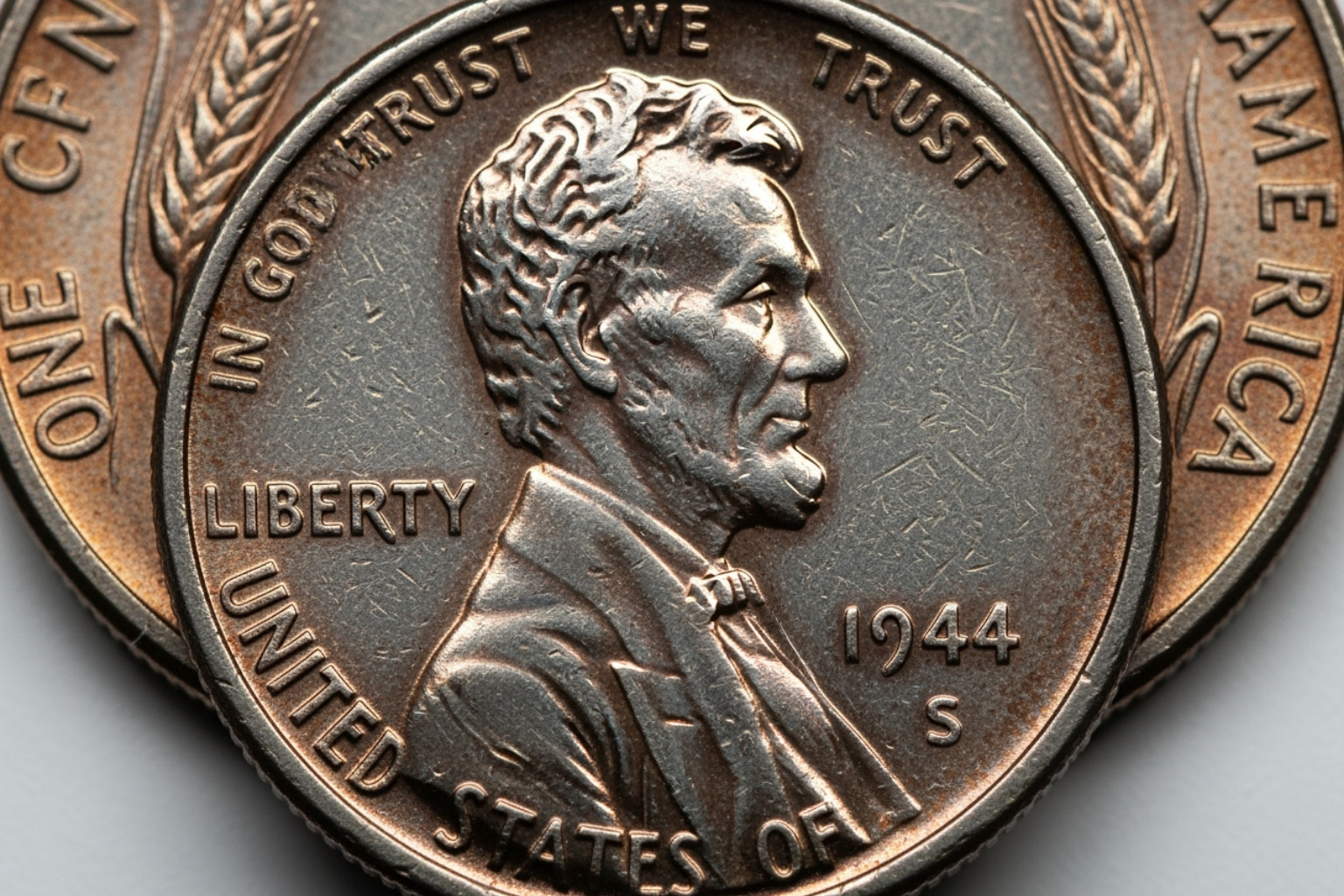
In 1944, the U.S. Mint had returned to copper production after the wartime steel penny experiment of 1943. However, a few leftover zinc-coated steel planchets somehow found their way into the San Francisco Mint’s penny production. The result? A coin that shouldn’t exist, with its distinctive silver-gray appearance standing out dramatically from the typical copper-red pennies of that year.
The most valuable 1944 wheat penny value reaches its absolute peak with this variety. One specimen sold for a breathtaking $408,000 in 2021, while another fetched $373,750 in 2008. These aren’t just coins – they’re pieces of history that capture a moment when wartime production created something truly unique.
You can explore the fascinating PCGS auction data for the 1944-S Steel Cent to see how these remarkable coins have performed at auction over the years.
2. The 1944 Philadelphia (No Mint Mark) Steel Wheat Penny
The Philadelphia Mint created its own accidental masterpiece with the 1944 steel wheat penny. Since Philadelphia coins don’t carry a mint mark, these rare steel cents are identified by the absence of any letter below the date.
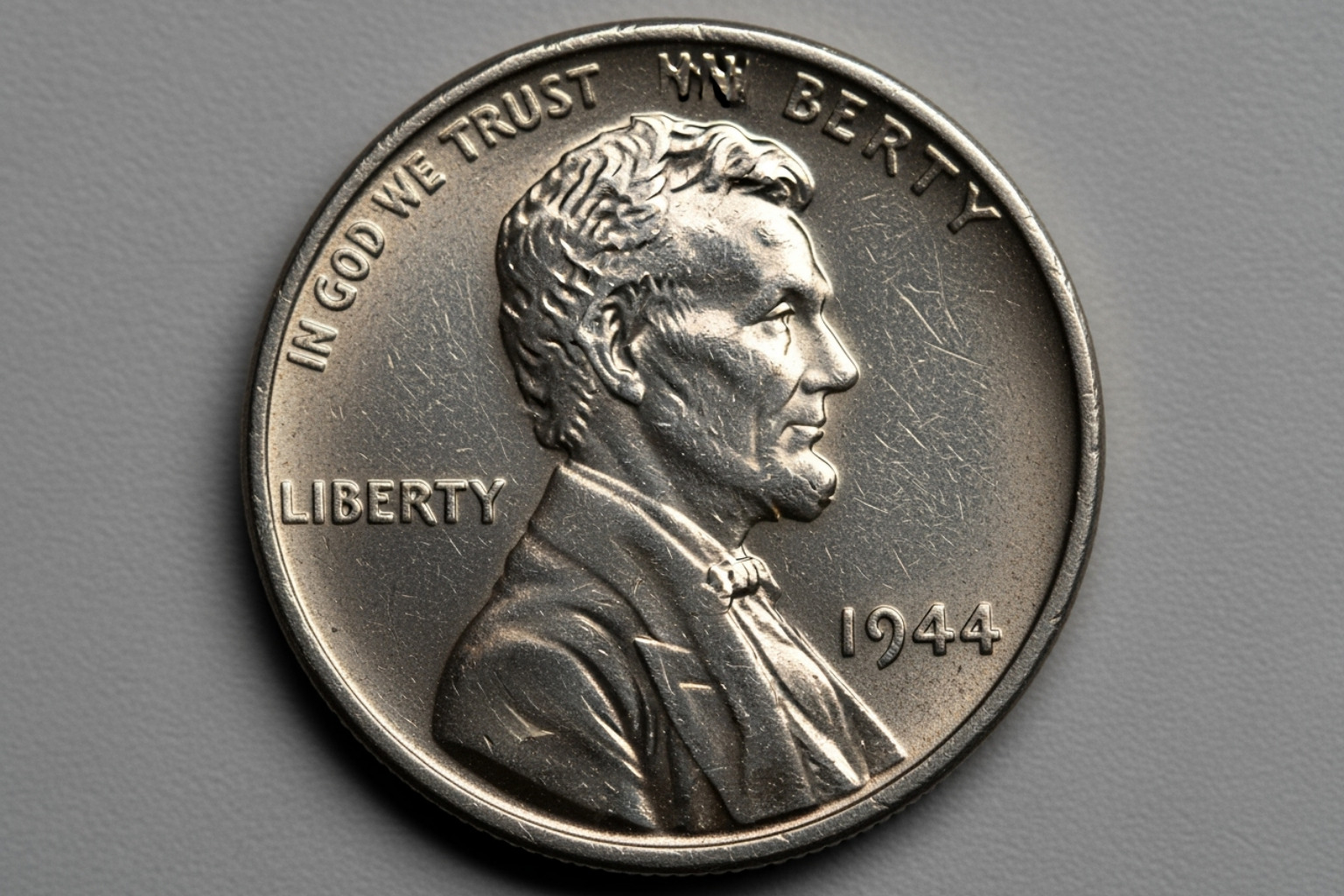
These transitional errors occurred when leftover 1943 steel planchets got mixed with the new copper blanks intended for 1944 production. Experts estimate that only 20 to 40 of these coins were ever created, making them incredibly scarce.
The auction results speak volumes about their desirability. Examples have sold for $158,625 and $180,000, with one exceptional uncirculated specimen valued at over $1 million. That’s quite a return on a one-cent investment!
Here’s where coin collecting becomes genuinely exciting for everyday people: if you suspect you have a steel 1944 penny, try the magnet test. Steel pennies will stick to a magnet, while copper ones won’t. It’s that simple difference between finding loose change and finding a fortune.
3. The 1944-D Steel Wheat Penny
Denver’s contribution to the most valuable 1944 wheat penny value story is perhaps the rarest of all. With only an estimated 7 to 10 examples known to exist, the 1944-D Steel Wheat Penny represents the ultimate treasure hunt find.
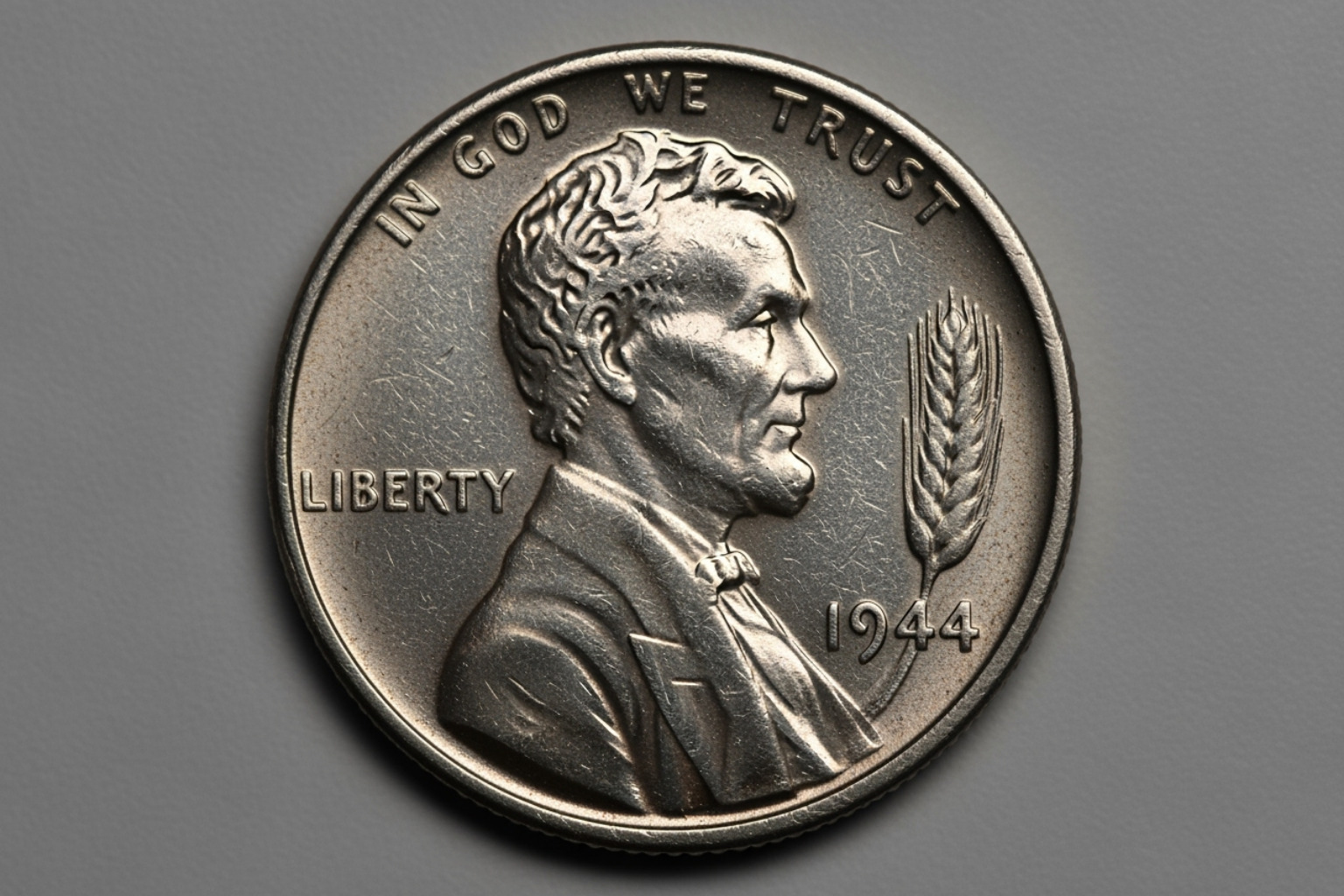
Like its Philadelphia and San Francisco cousins, this coin exists because of leftover zinc-coated steel planchets from 1943 that accidentally made it into 1944 production. The ‘D’ mint mark beneath the date identifies its Denver origin.
A 1944-D Steel Lincoln Penny graded MS63 sold for $115,000 in 2007, with other examples reaching $79,313 and $82,250. These prices reflect not just rarity, but the incredible story behind each coin’s existence.
There’s something deeply satisfying about knowing that wartime production challenges created these unintended treasures. Each one represents a moment when history took an unexpected turn, creating lasting value from temporary chaos.
4. The 1944-D/S Over-Mintmark Penny
Not every valuable 1944 penny owes its worth to steel composition. The 1944-D/S Over-Mintmark Penny proves that minting errors in copper can be equally fascinating and valuable.
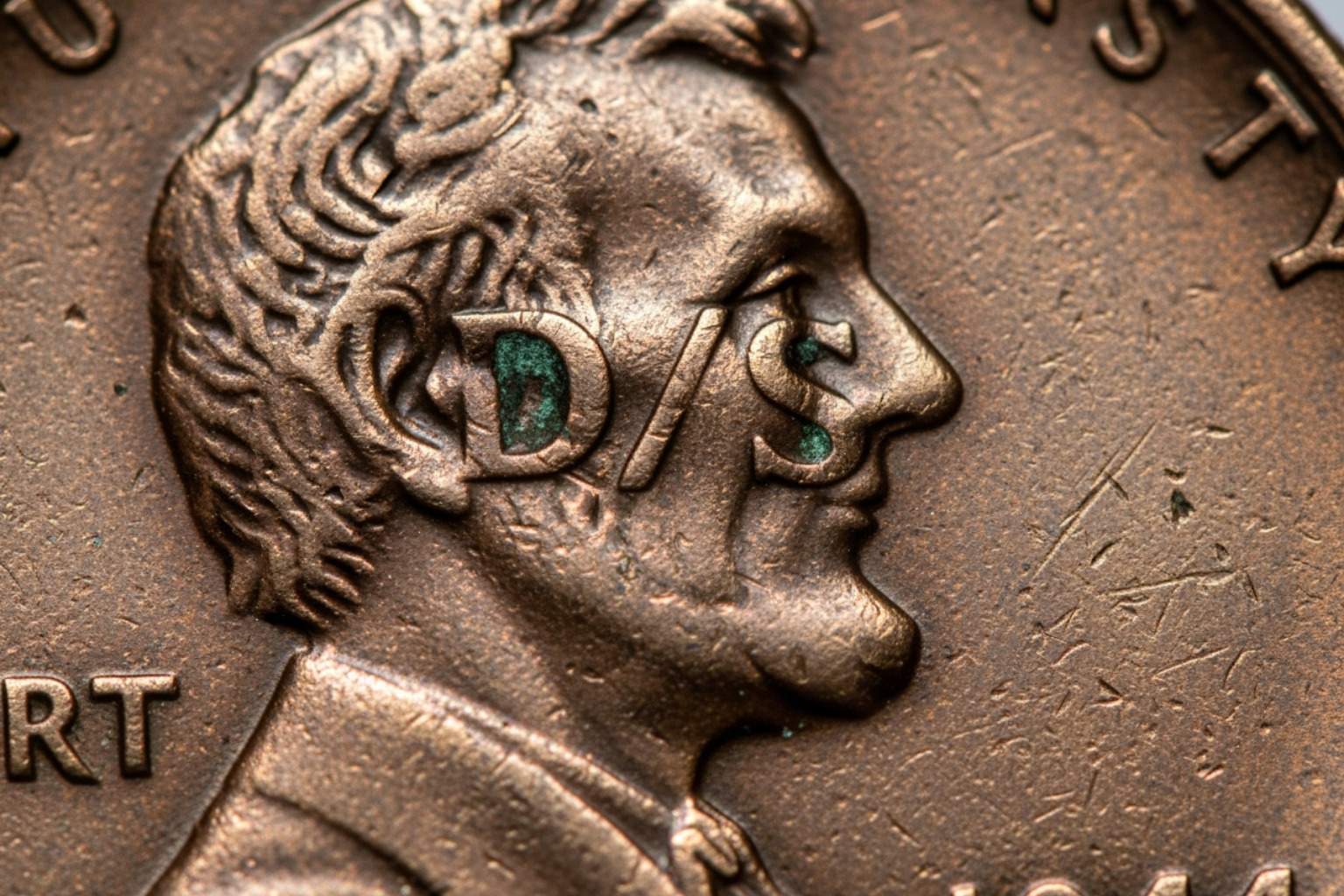
This doubled die error occurred when a Denver mintmark ‘D’ was punched over a previously placed San Francisco mintmark ‘S’. Picture a die intended for San Francisco somehow ending up in Denver, where workers attempted to correct the mintmark by stamping a ‘D’ over the existing ‘S’.
The result is a coin that tells the story of wartime production challenges and human problem-solving. High-grade examples are particularly sought after, with a stunning MS67+ Red specimen selling for $49,938. You can see details of this remarkable sale at Legend Auctions sale of a high-grade D/S penny.
These over-mintmark varieties typically range between $50,000 and $60,000, proving that careful attention to detail – much like choosing quality ingredients in skincare – can reveal extraordinary value in seemingly ordinary objects.
5. The High-Grade 1944 Copper Wheat Penny (MS68 RD)
Sometimes perfection is the rarest quality of all. While billions of 1944 copper pennies were minted, finding one in absolutely pristine condition is extraordinarily difficult.
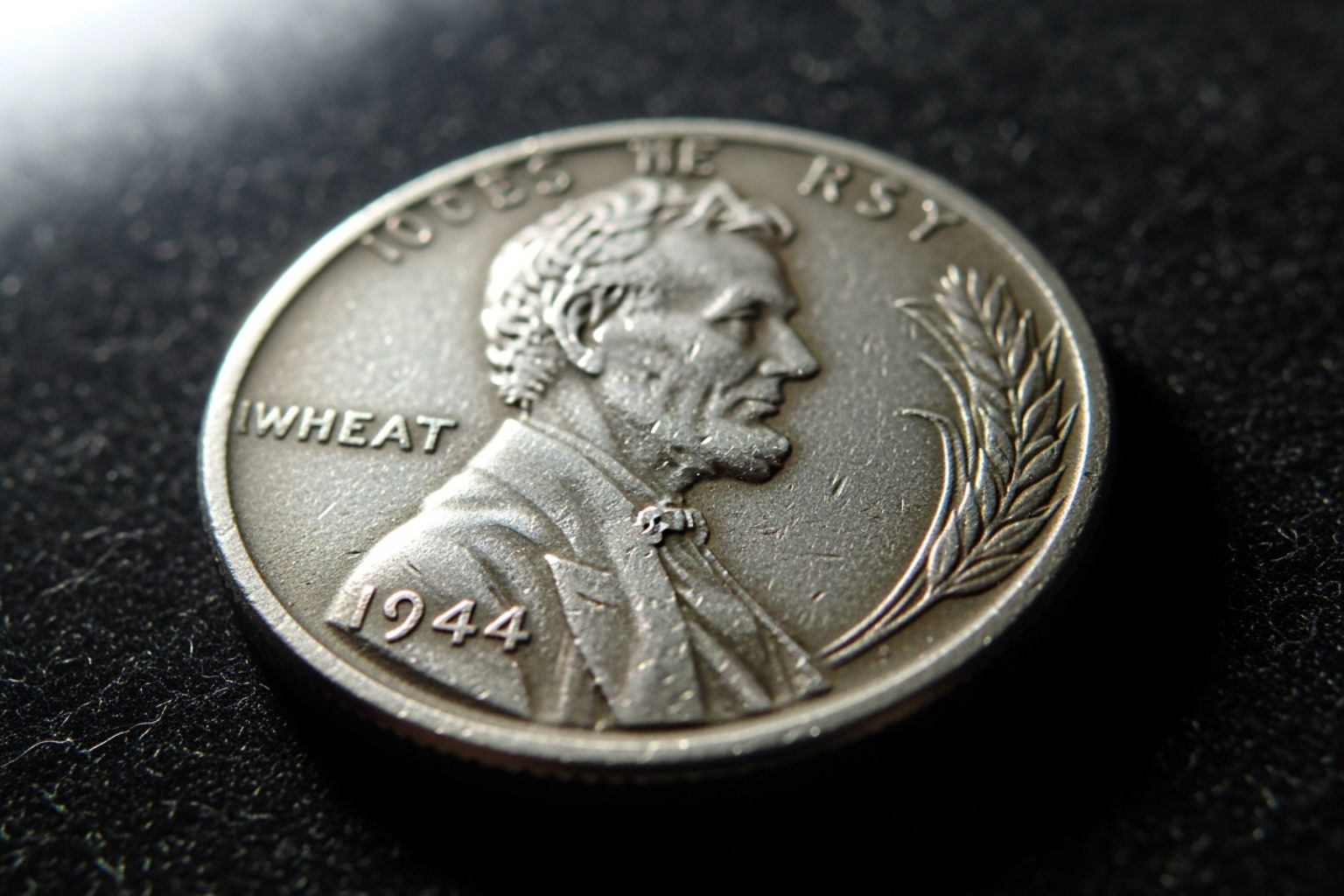
An MS68 Red designation means this coin looks exactly as it did when it left the mint nearly 80 years ago. The original copper luster remains vibrant, with no wear, scratches, or environmental damage. It’s like finding a vintage item that somehow escaped the passage of time completely.
One such perfect specimen sold for $10,800, demonstrating how condition can transform even common coins into valuable collectibles. The Red (RD) color designation is crucial here – it indicates the coin has retained its original mint coloration without the browning that typically occurs over decades.
Professional grading becomes essential at this level of preservation. Services like PCGS and NGC authenticate these coins and encapsulate them to preserve their condition, maximizing their resale value and ensuring their authenticity for future collectors.
The beauty of this variety lies in its accessibility. While steel pennies are incredibly rare, perfect copper pennies might still be finded in inherited collections or forgotten coin rolls. It’s a reminder that sometimes the most valuable 1944 wheat penny value comes not from errors, but from exceptional care and preservation over time.
What Determines the Most Valuable 1944 Wheat Penny Value?
Understanding what makes a coin truly valuable is like appreciating the finest details in skincare – it’s all about quality, authenticity, and the story behind each element. When we explore the most valuable 1944 wheat penny value, we’re looking at a fascinating blend of historical accident, pristine preservation, and the kind of attention to detail that transforms ordinary objects into extraordinary treasures.
The Story Behind the Steel: Historical Context
The story of valuable 1944 pennies begins with one of history’s most dramatic periods – World War II. Picture this: it’s 1943, and America needs every ounce of copper for the war effort. Bullets, shell casings, and military equipment demanded this precious metal, so the U.S. Mint made an unprecedented decision. They switched penny production from copper to zinc-coated steel, creating those distinctive silver-colored 1943 cents that often confused shopkeepers who mistook them for dimes.
By 1944, copper became available again – much of it recycled from the very battlefields where American soldiers fought. These recycled shell casings were melted down and transformed into new pennies, creating a direct, tangible connection between our pocket change and the war effort. It’s a beautiful example of change and renewal, much like how we value sustainable practices today.
Here’s where the magic happened: when the mints switched back to copper in 1944, a few leftover steel blanks from 1943 accidentally slipped into the production runs. These “transitional errors” occurred at Philadelphia, Denver, and San Francisco, creating some of the rarest coins in American history. Any steel pennies finded during quality control would have been melted down immediately, making the survivors incredibly precious.
This historical accident is what drives the extraordinary most valuable 1944 wheat penny value for steel varieties – they’re literally pieces that weren’t supposed to exist.
Key Factors Influencing the Most Valuable 1944 Wheat Penny Value
Just like choosing the right ingredients for skincare, determining a coin’s value requires understanding several key elements that work together to create something special.
Material composition stands as the most dramatic factor. While over 2 billion copper pennies were minted in 1944, making them quite common, those accidental steel pennies represent some of the rarest coins ever created. The difference between copper and steel can mean the difference between pocket change and a house payment.
Condition and grade play equally crucial roles in value determination. Coins are graded on the Sheldon Scale, ranging from 1 (Poor) to 70 (Perfect). Circulated coins show the wear and tear of daily life – scratches, dullness, and fading that come from being handled and spent. These typically hold minimal value beyond their copper content.
Uncirculated coins tell a different story entirely. These mint state specimens never entered circulation, preserving their original beauty and luster. The closer they get to perfect MS70 grade, the more valuable they become. That stunning MS68 Red specimen we discussed earlier, which sold for $10,800, exemplifies how perfection commands premium prices.
Mint marks reveal where each coin was born. Philadelphia (no mint mark) produced the most at 1.4 billion coins, while Denver struck 430 million and San Francisco made 282 million. For regular copper pennies, these quantities don’t create dramatic value differences. However, for error coins, the mint mark becomes crucial – remember, only two 1944-S steel pennies are known to exist.
Errors and anomalies transform ordinary coins into numismatic legends. Off-metal strikes like the steel pennies, doubled dies where design elements appear twice, and over-mintmarks like the 1944-D/S variety all create unique specimens that collectors treasure. These manufacturing “mistakes” often become the most valuable finds.
A Penny’s “Complexion”: Understanding Coin Color and Patina
There’s something deeply satisfying about appreciating how materials age gracefully over time – much like how we value the natural beauty that comes with caring for our skin properly. Copper coins develop what numismatists call a “complexion” through their interaction with air and environment.
Copper naturally oxidizes when exposed to oxygen, creating patina that tells the story of a coin’s journey through time. While some patinas can be quite attractive, collectors generally prize coins that maintain their original vibrant appearance.
Red (RD) coins retain at least 95% of their original copper glow – that warm, lustrous finish that makes them appear almost freshly minted. These specimens command the highest prices because they’ve been preserved so carefully that decades feel like yesterday.
Red-Brown (RB) coins show a beautiful blend of original copper color mixed with gentle brown toning. They’re still highly valued, representing coins that have aged gracefully while maintaining much of their original character.
Brown (BN) coins have fully oxidized to a uniform brown color. While still collectible and historically significant, they typically command lower premiums than their more colorful cousins.
The preservation of original mint luster speaks to careful storage and handling – qualities that serious collectors deeply appreciate. It’s this attention to maintaining authenticity and original beauty that creates the most desirable specimens, much like how proper care preserves the best qualities in anything we value.
How to Identify and Authenticate Your 1944 Penny
Picture this: you’re sorting through a box of old coins from your grandmother’s collection, and there it is – a 1944 penny with an unusual silvery shine. Your heart skips a beat. Could this be one of those legendary steel pennies worth hundreds of thousands? The excitement of potentially finding the most valuable 1944 wheat penny value is intoxicating, but before you start planning your celebration, let’s walk through the steps to properly identify what you’ve found.
Simple At-Home Tests for Your Potential Treasure
The beauty of coin collecting lies in those moments of findy, much like finding the perfect skincare ingredient that transforms your routine. Your first examination doesn’t require expensive equipment – just careful observation and a few household items.
Start with a thorough visual inspection. Hold your 1944 penny under good lighting and look closely at the date to confirm it reads “1944.” Below the date, search for a mint mark – a tiny letter that tells the coin’s origin story. A ‘D’ means Denver, an ‘S’ indicates San Francisco, and no mint mark means Philadelphia. This small detail can make a significant difference in value.
Next, examine the coin’s overall condition with the care you’d give to evaluating a vintage piece of jewelry. Look for sharp, clear details in Abraham Lincoln’s portrait and the wheat stalks on the reverse. Use a magnifying glass if you have one – even a simple jeweler’s loupe will reveal details invisible to the naked eye. Well-preserved details often indicate a coin that’s been carefully stored, much like how proper storage preserves the potency of natural skincare ingredients.
The magnet test is your most important first step for identifying a potential steel penny. Gently touch a strong magnet to your 1944 penny. If it sticks, your pulse should quicken – you might be holding a rare steel error worth a fortune! Standard copper pennies won’t be attracted to magnets, making this simple test incredibly revealing.
Weight comparison can provide another clue, though it’s subtler. A standard copper 1944 penny weighs 3.11 grams, while a steel version weighs only 2.7 grams. If you have a kitchen scale that measures grams, this difference becomes more apparent. However, for coins with serious potential value, professional weighing is essential.
Finally, use your magnifying glass to hunt for errors that could significantly boost value. Look for doubled letters or numbers in the date or inscriptions like “LIBERTY” or “IN GOD WE TRUST.” For the valuable D/S over-mintmark variety, examine the mint mark area carefully for any faint traces of an ‘S’ underneath the ‘D’. Sometimes the most valuable treasures hide in the smallest details.
The Role of Professional Grading Services
Just as you wouldn’t rely on a bathroom selfie to assess your skin’s true condition, determining the most valuable 1944 wheat penny value requires professional expertise. If your preliminary tests suggest you have something special – particularly a suspected steel penny or an exceptionally well-preserved copper coin – professional grading becomes not just helpful, but essential.
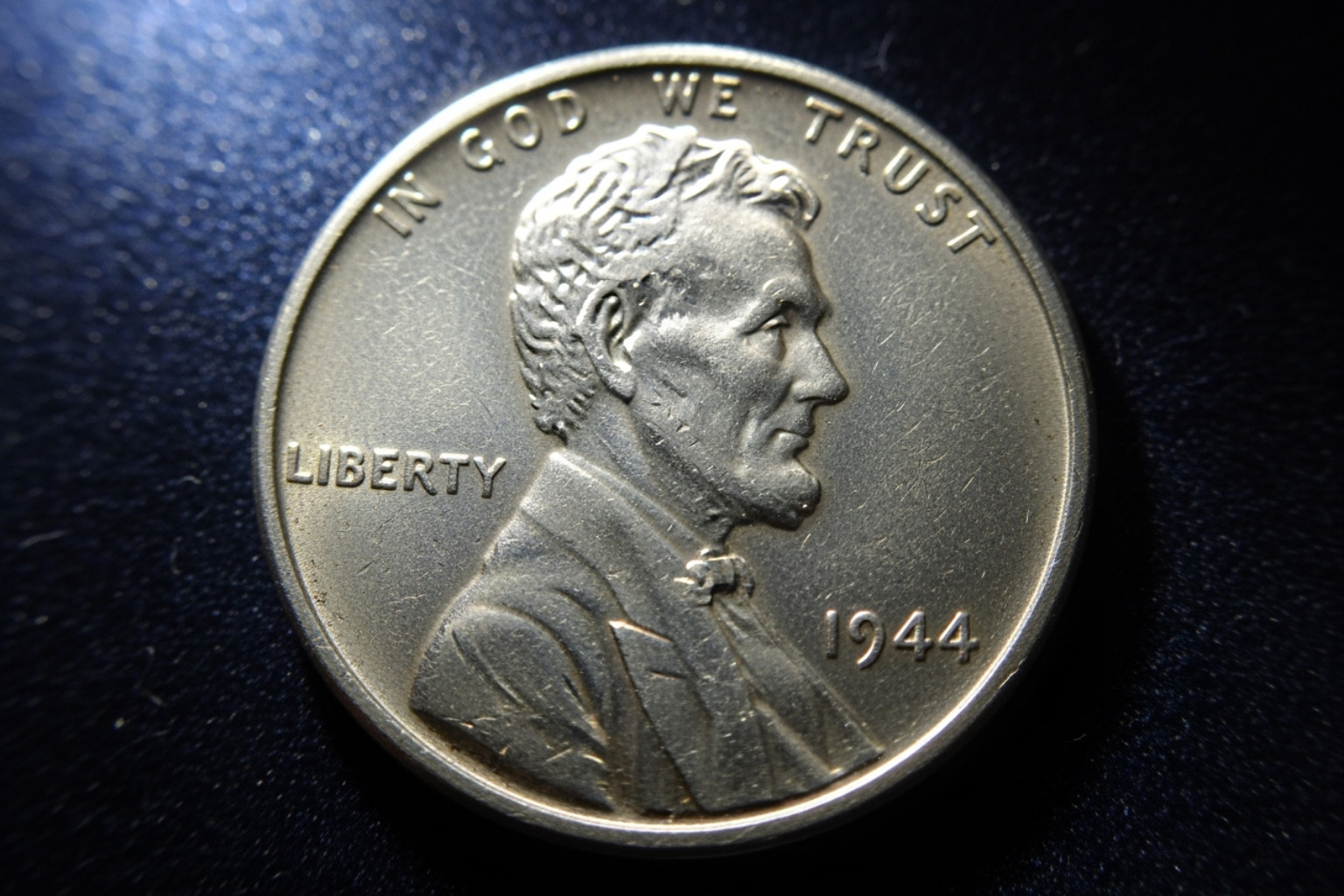
Professional grading serves as the ultimate authentication for valuable coins. Think of it as getting a professional skin analysis – experts use specialized equipment and years of experience to see what the untrained eye might miss. Reputable grading services verify your coin’s authenticity, ensuring it’s not a clever counterfeit or an altered piece designed to fool collectors.
The condition assessment process involves trained numismatists examining your coin under controlled lighting and magnification, assigning a precise grade on the Sheldon Scale. This grade – whether it’s MS66, MS68, or another designation – essentially determines your coin’s market value. The difference between grades can mean thousands of dollars.
Authentication and encapsulation provide long-term protection and proof of quality. Once graded, your coin is sealed in a tamper-evident plastic holder, often called a “slab.” This protective case preserves the coin’s condition while providing permanent documentation of its authenticity and grade. It’s like professional packaging that maintains the integrity of premium beauty products.
The top services in the United States are PCGS (Professional Coin Grading Service) and NGC (Numismatic Guaranty Corporation). These organizations represent the gold standard in coin authentication. You can explore their extensive databases, such as the NGC Coin Explorer for 1944 Cents, to compare your coin with professionally graded examples.
Professional grading maximizes resale value in ways that can’t be overstated. A coin certified by a reputable service almost always sells for significantly more than an identical uncertified piece. Collectors and dealers trust these services, which removes uncertainty and increases buyer confidence. For a potentially valuable 1944 penny, the grading fee is a small investment that could yield enormous returns.
The process mirrors the careful evaluation we apply to wellness choices – seeking expert guidance ensures we make informed decisions that truly benefit us in the long run.
Frequently Asked Questions about the 1944 Wheat Penny
After diving deep into rare 1944 pennies, we know you probably have some burning questions. Think of this as our heart-to-heart chat about what most people really want to know about the most valuable 1944 wheat penny value. Let’s clear up the common confusion and set realistic expectations for your coin collecting journey.
How much is a common 1944 copper wheat penny worth?
Here’s where we need to have an honest conversation. While we’ve been talking about pennies worth hundreds of thousands of dollars, the reality is that most 1944 copper wheat pennies you’ll encounter are quite common. The Philadelphia Mint alone produced over 1.4 billion of these coins, making them about as rare as finding sand at the beach.
If your 1944 penny has been circulating – meaning it’s been used as actual money and shows signs of wear – its value typically falls between 15 to 50 cents. This might seem disappointing, but remember, you’re holding a piece of history that helped people buy their morning coffee during World War II. The value here comes mostly from collectors who need this date to complete their sets, plus the small amount of copper content (worth about $0.0257 in melt value).
If you’ve finded an uncirculated 1944 copper penny – one that looks like it just rolled off the mint press – now we’re talking about something more interesting. These can range from $1 to $15 or more, depending on exactly how pristine they are. A coin graded MS60 might be worth around $0.90, while a sharper MS62 example from San Francisco could reach $5.
The key is understanding that even common coins have their place in the collecting world. It’s like appreciating the simple beauty of a well-aged patina – not everything valuable has to be a rare treasure.
What is the main difference between a 1944 copper and a 1944 steel penny?
This is the million-dollar question – literally! The differences between these two types are like comparing apples to oranges, and knowing them could be the difference between pocket change and a life-changing findy.
The composition tells the whole story. Your typical 1944 penny is made of 95% copper and 5% zinc, giving it that familiar reddish-brown color we all know. The rare steel versions, however, are made of zinc-coated steel, creating a distinctive silver-gray appearance that looks more like a tiny dime than a penny.
Weight is another telltale sign. Copper pennies tip the scales at 3.11 grams, while their steel cousins weigh just 2.7 grams. It’s a subtle difference, but noticeable when you’re holding them side by side.
The magnetism test is your best friend. This is the easiest and most definitive way to identify a potential treasure. Copper pennies won’t budge near a magnet – they’re completely non-magnetic. But steel pennies? They’ll jump right to that magnet like they’re excited to meet you. This simple test has revealed fortunes hiding in old coin jars.
Visually, they’re worlds apart. While copper pennies show that warm, familiar penny color (even when toned or aged), steel pennies maintain their silvery appearance. It’s like comparing a sunset to moonlight – both beautiful, but unmistakably different.
Understanding these differences is crucial because that magnet test could reveal one of the most valuable coins in American numismatics sitting right in your pocket.
Where is the best place to sell a valuable 1944 wheat penny?
So you’ve done the magnet test, examined every detail, and you believe you’ve struck gold (or steel, in this case). Now comes the exciting but nerve-wracking question: where do you turn this findy into the most valuable 1944 wheat penny value it deserves?
For moderately valuable coins, reputable coin dealers are your starting point. These professionals have the expertise to properly evaluate your find and can offer fair prices based on current market conditions. Look for dealers with strong reputations and customer reviews – this isn’t the time to trust just anyone with your potential treasure.
When you’re dealing with the truly exceptional pieces – those steel error coins or perfect-grade specimens – major auction houses become your best allies. Companies like Heritage Auctions have access to serious collectors worldwide who compete for these rarities. Their expertise and global reach can turn a rare find into a record-breaking sale.
Online marketplaces require extreme caution. While platforms like eBay might seem convenient, selling high-value coins there without professional authentication is like walking a tightrope without a net. For common coins, it might work fine, but for anything potentially worth thousands, you need the credibility that comes with professional grading.
Coin shows and conventions offer a unique opportunity to meet multiple experts face-to-face. You can compare opinions, get different perspectives, and sometimes find that perfect collector who’s been searching for exactly what you have.
Before making any moves, consider professional appraisal services. Getting an expert opinion protects you from undervaluing your findy and gives you the confidence to negotiate from a position of knowledge.
Patience often pays off with rare coins. The right buyer for a truly exceptional 1944 penny might be worth waiting for, especially when we’re talking about coins that could fund a comfortable retirement.
Conclusion: The Enduring Beauty of a Piece of History
Our journey through the most valuable 1944 wheat penny value has revealed something truly magical about collecting. We’ve finded how a simple penny – something you might find tucked away in a drawer or forgotten in an old jar – can tell extraordinary stories of wartime America and hold values that reach into the hundreds of thousands of dollars.
There’s something deeply satisfying about finding treasure in unexpected places. Most 1944 pennies are worth just a few cents, but those rare steel errors and pristine specimens remind us that beauty and value often hide in plain sight. The accidental steel cents, born from wartime copper shortages and leftover planchets, represent more than just minting mistakes – they’re tangible pieces of history that connect us to a pivotal moment when America was reshaping itself for victory.
The joy of collecting goes far beyond monetary value. When you hold a 1944 wheat penny, you’re touching something that might have passed through countless hands during one of history’s most defining periods. That copper might have come from recycled shell casings, carrying the story of sacrifice and determination right in your palm.
At Beyond Beauty Lab, we believe this appreciation for authentic materials and historical significance mirrors our approach to wellness and beauty. Just as we encourage you to understand the pure ingredients in your skincare routine, there’s something wonderfully grounding about recognizing the genuine article – whether it’s a rare coin or a carefully crafted wellness practice.
Engaging with hobbies like numismatics offers unexpected wellness benefits too. The careful observation required to spot a doubled die error, the patience needed to research historical context, and the mindful focus of examining fine details all contribute to a richer, more present way of living. It’s meditation disguised as treasure hunting.
Whether you find a common copper penny or stumble upon one of those legendary steel errors, the real treasure lies in the curiosity that led you to look closer. That same spirit of exploration and appreciation for authentic quality can improve every aspect of your life.
Explore our wellness resources to find more ways to bring this mindful appreciation into your daily routine.

